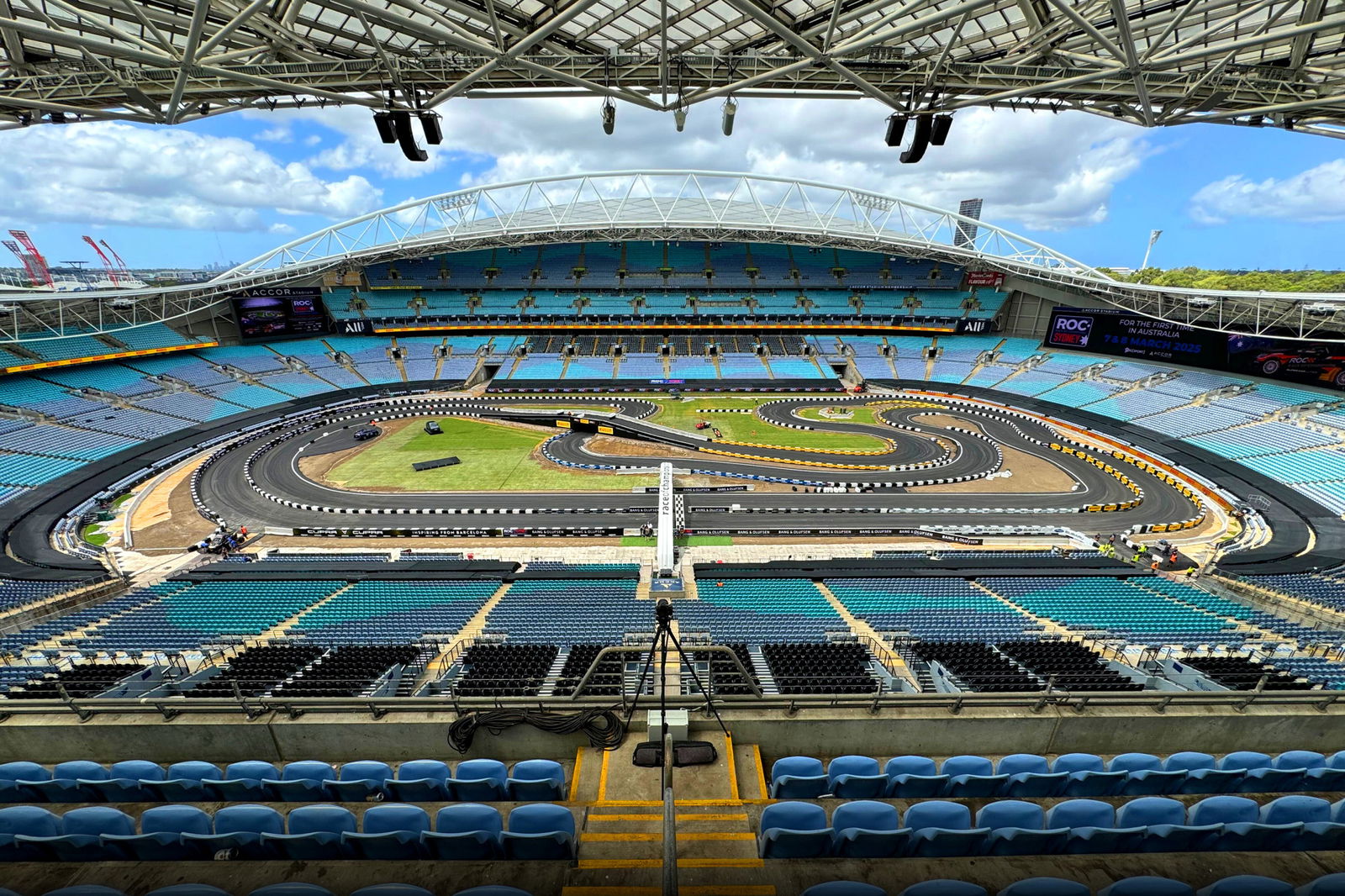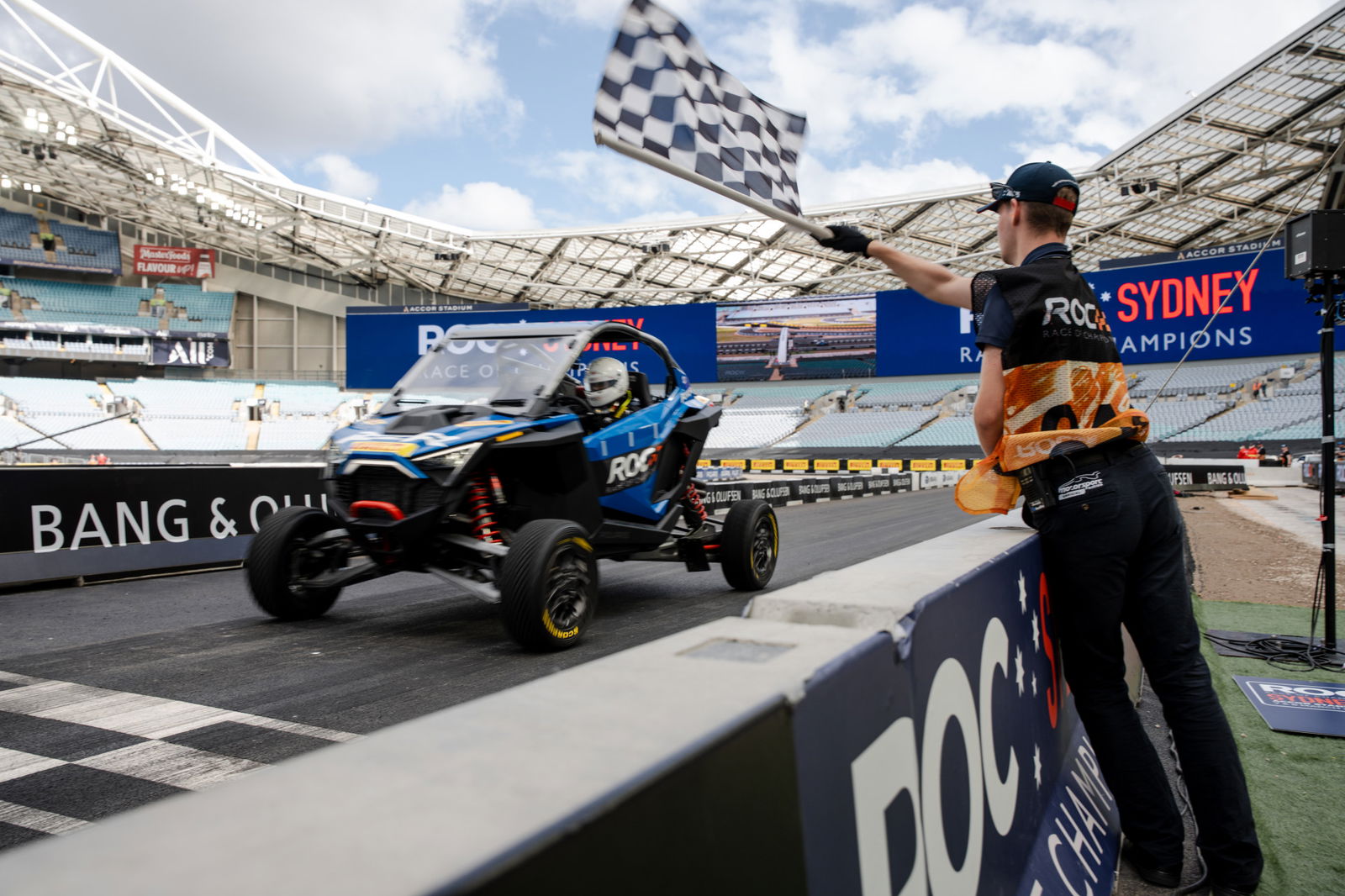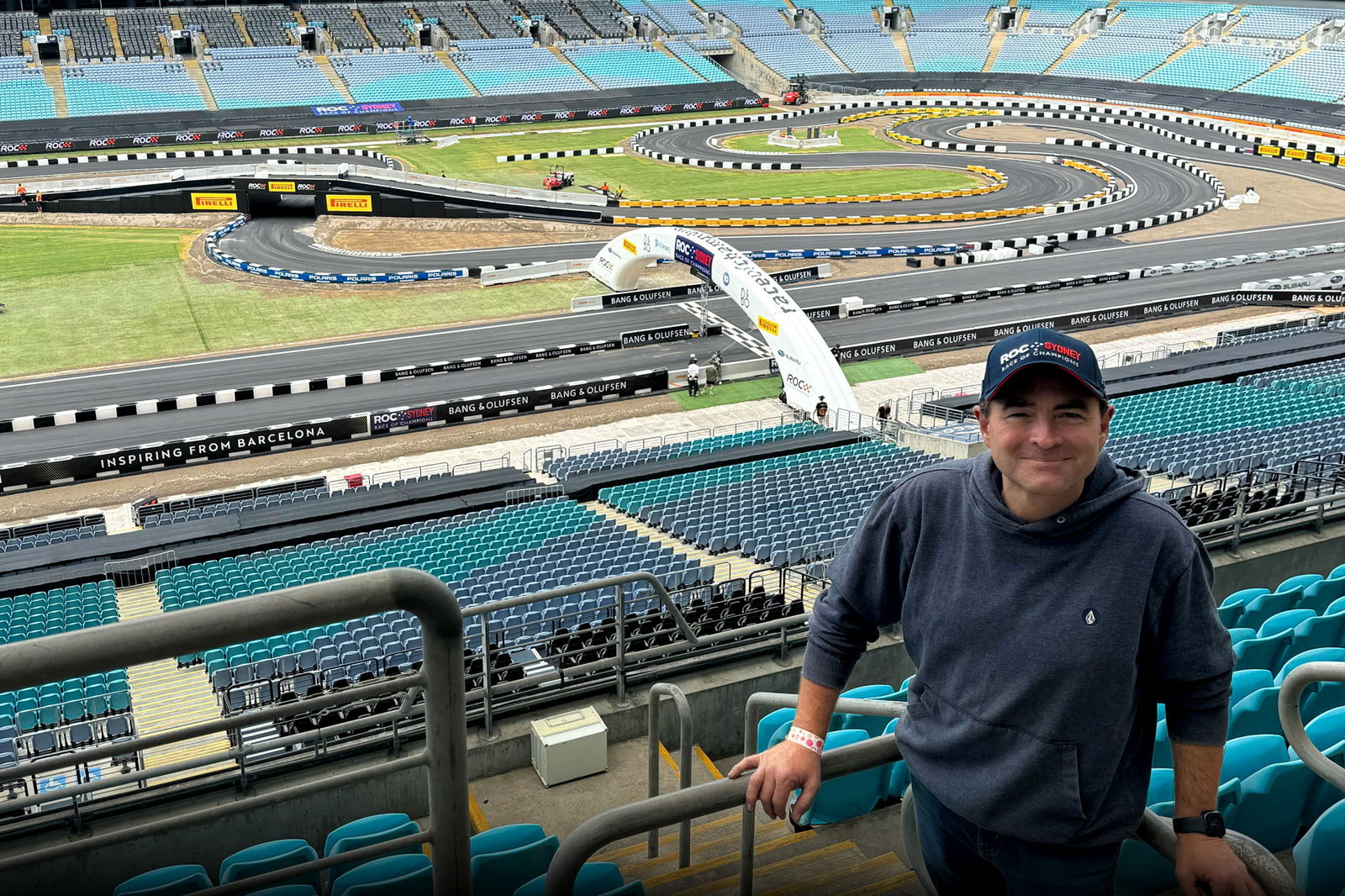

On March 7-8, Sydney’s Accor Stadium will host some of the world’s best drivers on a one-kilometre track.
It’s the work of surveyor John Modystach, a full-time surveyor and former racing driver who competed in Porsche Sprint Challenge and the production car era of the Bathurst 12 Hour.
Modystach, who runs Prosurv, is more accustomed to building highways hundreds of kilometres long in the outback.
Those jobs usually take months. His latest gig took a week, but made for a few sleepless nights.
“My normal job is either surveying, doing a lot of CAD software, volume stuff, or working with machinery in remote areas — but never building a race track in a stadium,” Modystach told Speedcafe.
“It’s been a buzz to figure it all out. A lot of moving parts I didn’t intend to have to deal with. My last job was 400km in the Pilbara. That was 20 months worth of work. Then we’ve done a kilometre in four days.”
Race of Champions was poised to be held in Perth until a deal was done for Sydney to host the event.
Michael Patrizi was an early driving force in bringing the event Down Under and introduced Race of Champions organiser Frederic Johnsson to Modystach.
Soon enough, the surveyor was tasked with constructing the circuit from start to finish.
“The way they explained it to me, Frederic had done this thing 30 times and he had a track build manual and it made it look very simple – though I probably misjudged the amount of sleepless hours I’d get out of it,” said Modystach.
“Pitch protection was a new thing I hadn’t ever dealt with before, but talking to Venues NSW ground staff, they coached us through it.”
The build began with laying 11,000 square metres of impermeable geofabric to keep the finer dirt off the pitch.
That was topped by 3600 sheets of plywood to great a barrier between the geo fabric and the rocks that form the track base.
“That was the most labour-intensive thing,” Modystach explained.
“There were two shifts of three teams just laying out this plywood all day. So that was day one it started.
“We took the keys of the venue on Wednesday morning and we had some delays waiting for the first bit to go down, which was geo fabric that didn’t turn up until 10 o’clock, but we were still updating the design at that point as well.
“The plywood started, went all through the day Wednesday and then I didn’t really feel like it was at that point where we were back to where we wanted to be, so I stayed on for the night shift and then I inherited the night shift from then on.
“We got the pitch protection done that night and then the dirt started rolling in the next day. 3500 tons of recycled road base from a quarry down the road and that came in over the next two-and-a-bit days.”

In total, 1500 tons of asphalt were laid to form the one-kilometre circuit. Before that got underway in earnest, however, they had to factor in a completely left-field curveball.
“On the night before the asphalt arrived, we saw Billie Eilish finish and it was traffic chaos – everyone leaving Billie Eilish,” he explained.
“The SOPA, Sydney Olympic Park Authority, shut down the roads with no thought of us. We busied ourselves and went and talked to the marshall for SOPA and said ‘Well, what’s happening tomorrow night for Kylie Minogue?’ and it was going to be the same thing.
“Thankfully, it wasn’t as long a duration that the shutdown happened, so our asphalt wasn’t really hampered at all. Up until then, it wasn’t something we expected.”
Finally, once the bridge was installed and the asphalt was laid, Modystach was able to relax a little.
“When the asphalt went down, it really felt like a race track then,” he said.
Minor “fiddley” stuff followed, as well as line marking and tidying the edges. Some dead grass was painted and manicured to make the stadium look the part.

On top of the asphalt were 1600 barriers by Tecpro, which were transported from Perth and supplied by Patrizi.
As the first night of the Race of Champions looms, Modystach is happy with how his race track has come together.
The brutal reality is that it’ll all have to be torn up once racing finishes on Saturday night. That process will begin with the removal of the concrete barriers, which weigh three tons apiece.
On Sunday morning, the asphalt will be milled and the road surface returned to the supplier to be recycled. That will take all day and on Monday the plywood will be lifted and recycled.
Once the geo-fabric is removed and the ground swept, the grass will be milled before a new turf is laid before NRL resumes its season in time for round four in late March.
“The end result looks amazing and I’m very happy,” said Modystach.
“I got a bit of kudos from Frederic’s track build manager. He put it up there with Wembley and Dusseldorf. I think Riyadh might have topped the charts. It sounded like we were top three.
“It will be a shame to rip it all up, that’s for sure.”





















Discussion about this post